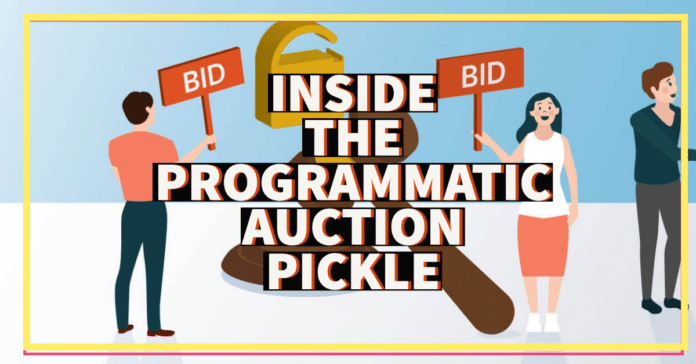Folks, let me tell you, the open market of programmatic inventory is in a bit of a pickle. The problem is that there are just too many publisher-initiated auctions going on at the same time, and it’s all happening in a shrinking ad tech space. This is leading to advertisers bidding against each other and driving up the price they pay. But hey, it’s making publishers a lot of money, so they’re not exactly rushing to fix the problem.
You see, the problem with all these auctions is that it’s causing a lot of duplicate inventory, and it’s mostly coming from lower quality publishers. That’s right, it’s not the premium publishers driving up the prices, it’s the ones that are just here to aggressively monetize their traffic.
Now, you might be thinking, what’s the harm? Well, the longer this impasse continues, the more lower quality supply will occupy the programmatic inventory market. And it doesn’t look like publishers are in a hurry to change things, at least not if the size of their ads.txt files is anything to go by.
You see, back in 2020, the top 10,000 publishers only authorized 205 supply paths for their programmatic auctions, but by late 2022, that number had tripled to 622 supply paths. And that, my friends, is why there’s just too much of the open market. It’s not cost-efficient to listen to it all, so everyone in the ad tech world is kind of throttling back on the amount of the open market they manage.
This is why you’re seeing a trickle of ad dollars move out of the open market into private marketplaces. However, it’s important to note that private marketplaces still only account for a smaller portion of online ad spending. Plus, private programmatic deals are a heavy lift and expensive, so the open auction remains the preferred option for many advertisers.
But, there is a better way, and it involves curation on a larger scale. Instead of curating a premium programmatic marketplace through one-to-one deals with publishers, agencies and advertisers are trying to create their own supply pipelines of curated inventory through one-to-many deals with publishers and supply-side platforms. These curated marketplaces are like a safer place to buy ads, where they avoid lower quality impressions and shady publishers.
In the long run, these curated marketplaces could become the equivalent of the open auction. The idea is to use them to pull money out of the open auction and help advertisers learn where the best audiences are. The more intel they get, the easier it is for them to start spending more money directly with the publishers that perform best. It’s a virtuous cycle, folks.
But for now, ad dollars continue to flow into the open market. And look, it’s not all bad. Ad tech vendors are working hard to sort the wheat from the chaff and remove lower quality inventory from the supply chain. But they can only do so much. So, the future of the open market of programmatic inventory remains to be seen. But, let’s hope that with a little help from curation, we can find a way to make the open market a better place for everyone.











